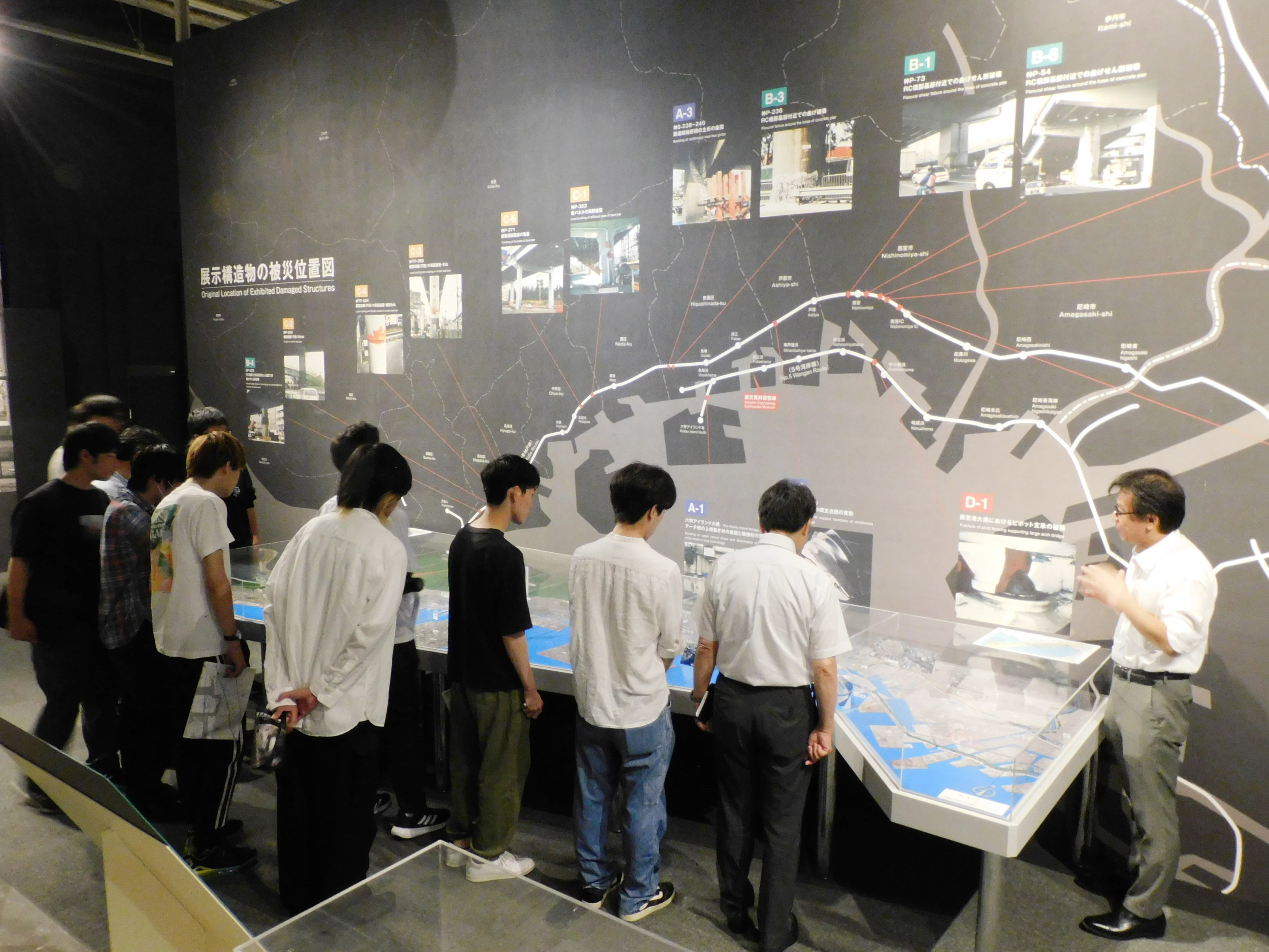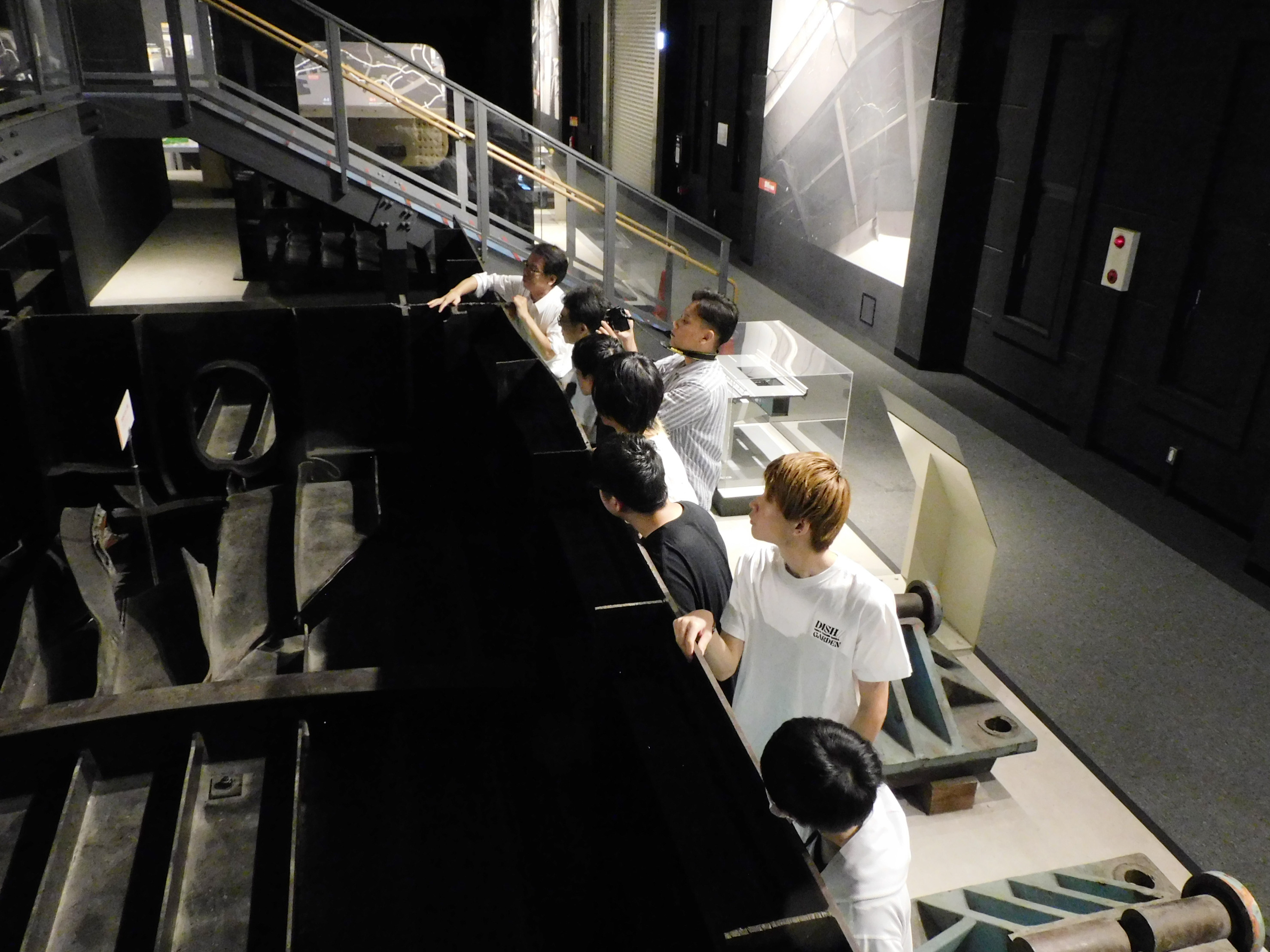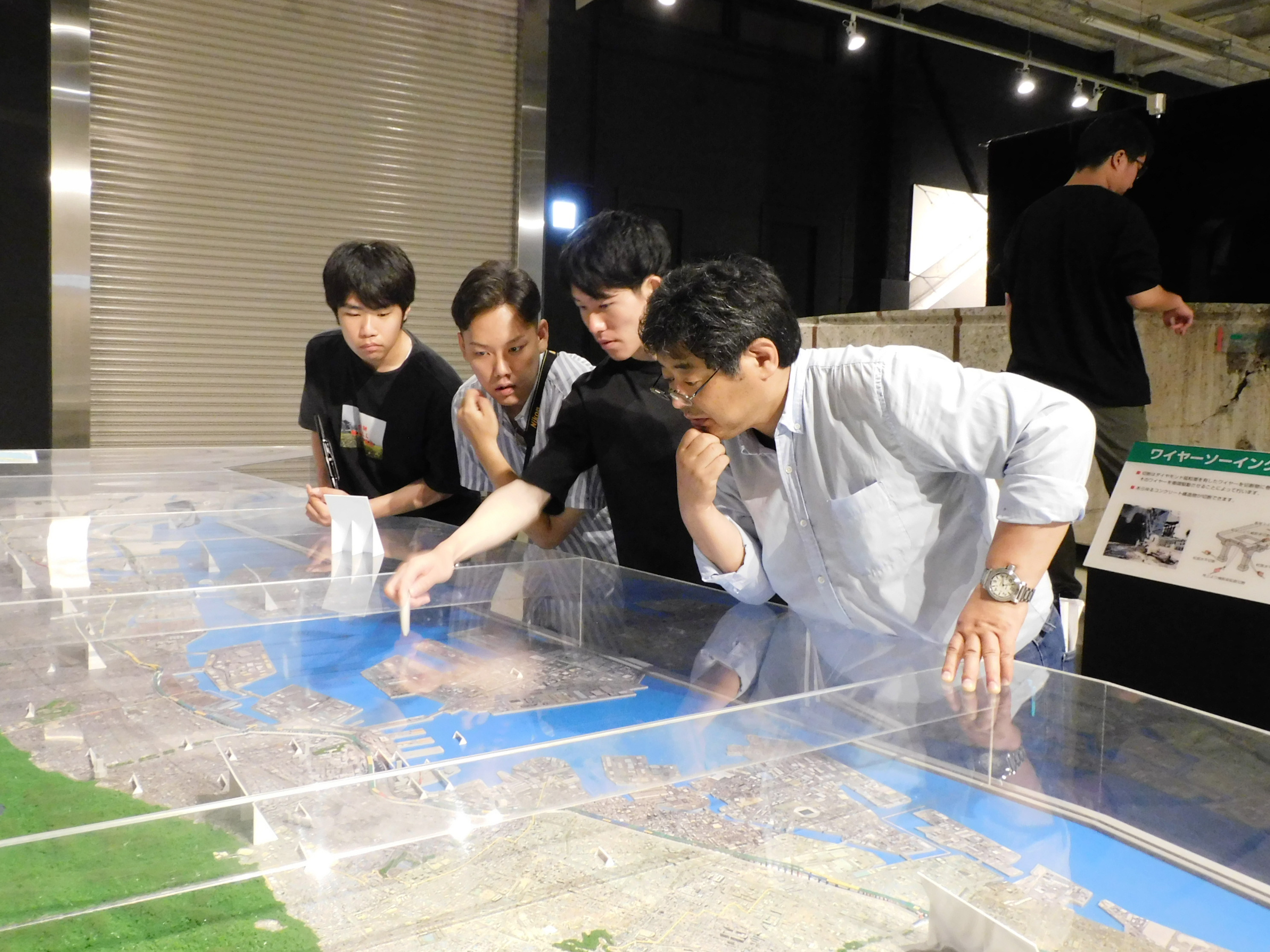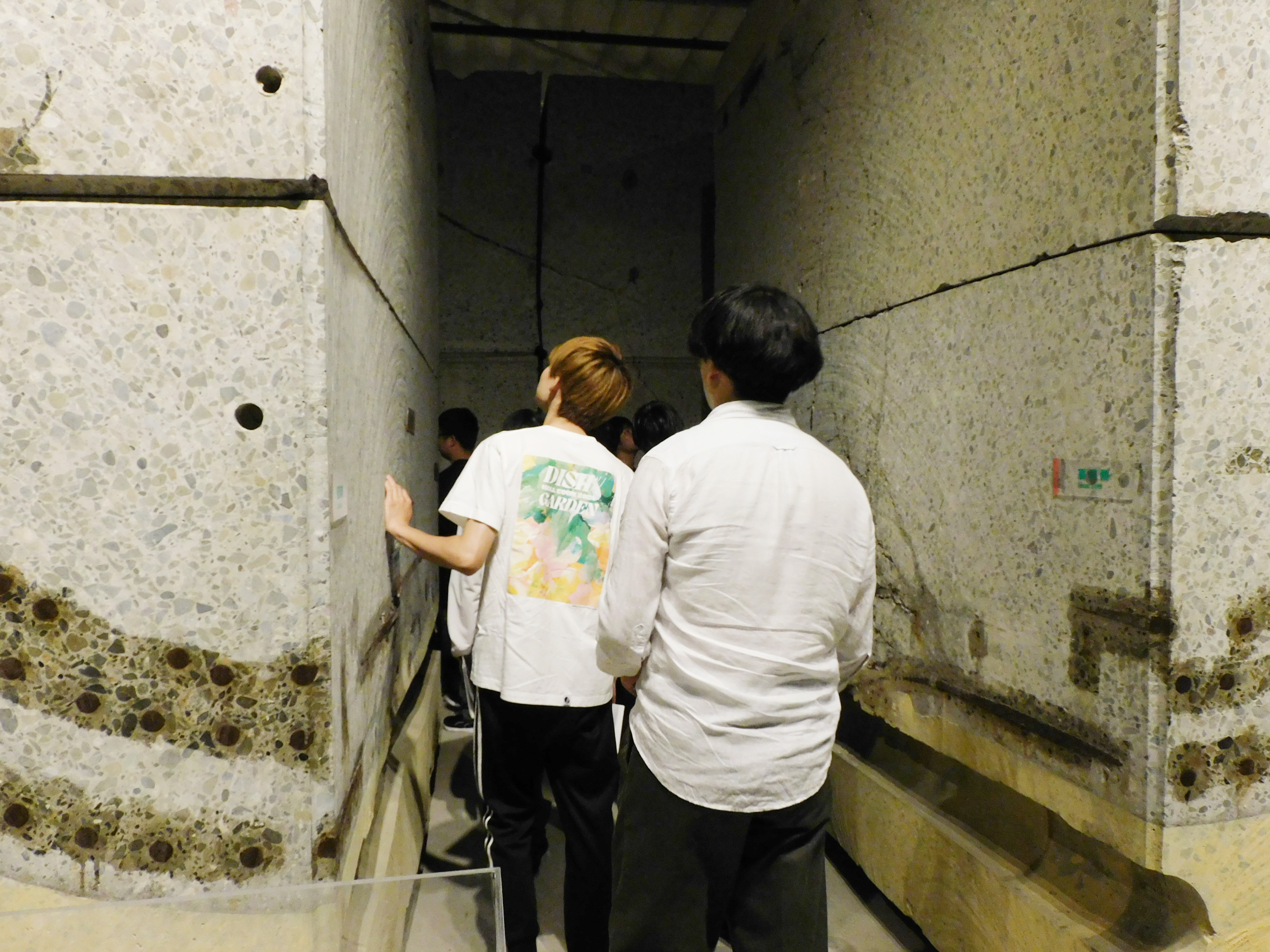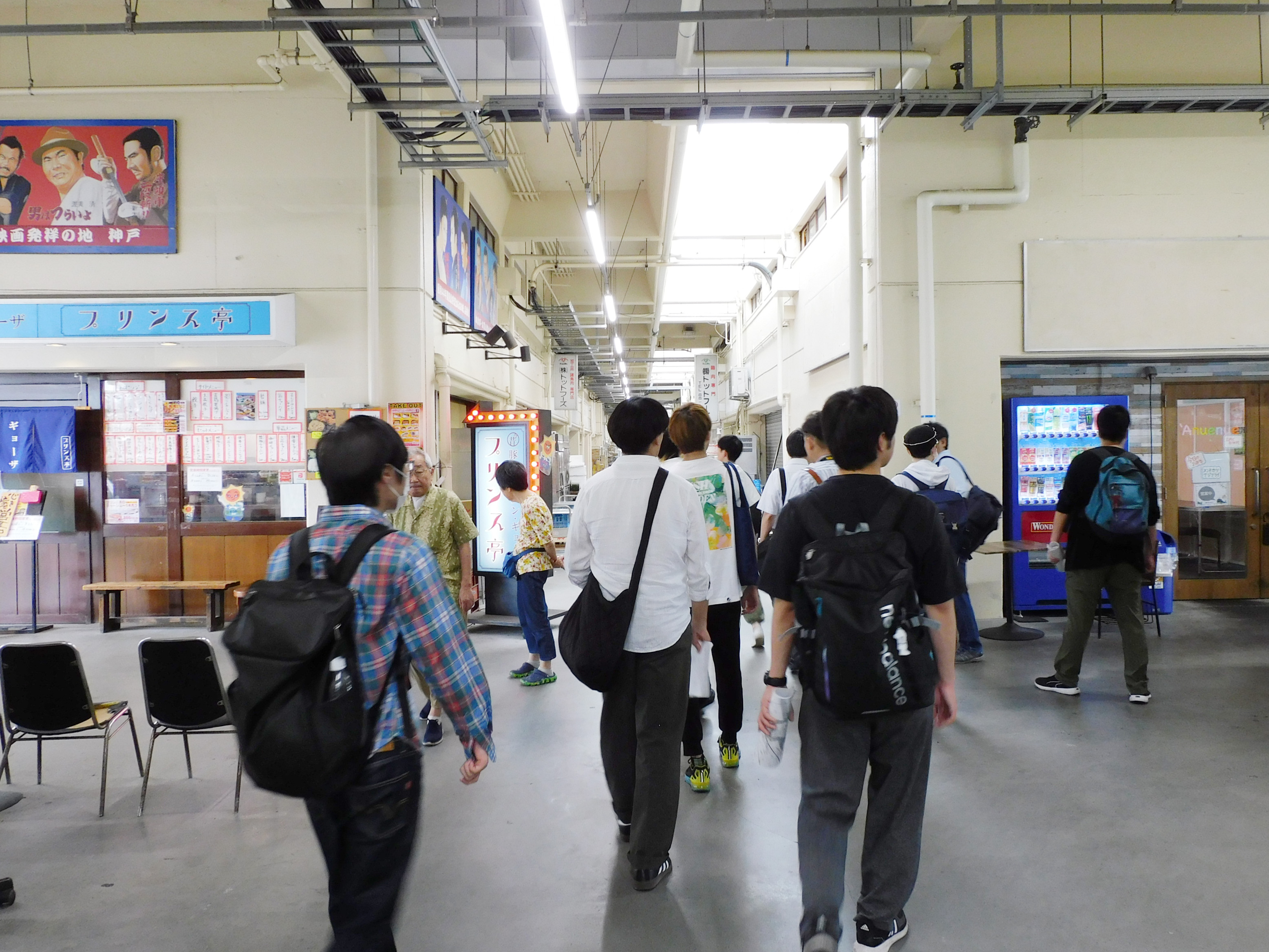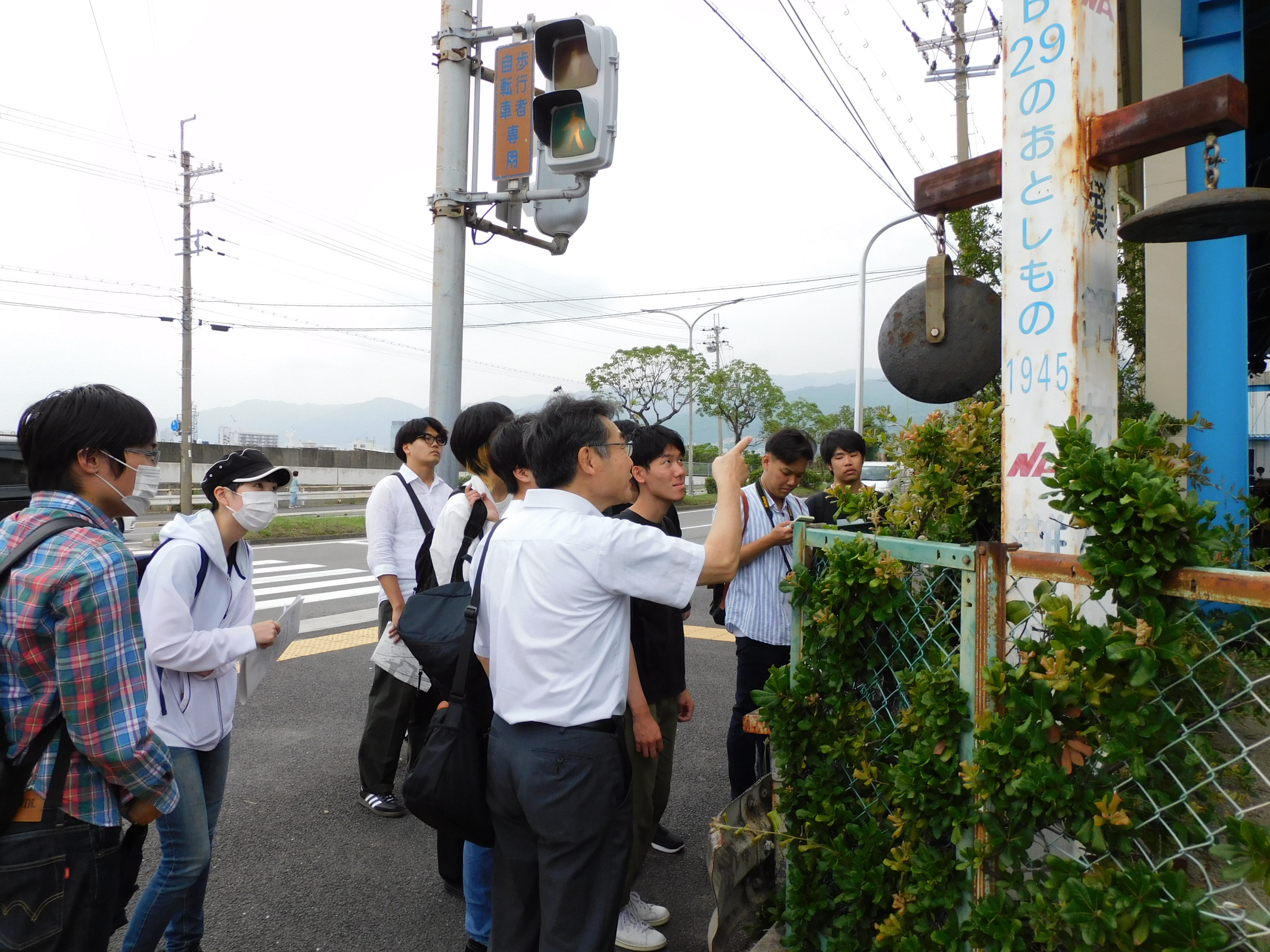
News & Press Releases
[Faculty of Intercultural Japanese Studies] Students plan field survey to "feel the scars of the earthquake firsthand"
2024.07.03
- Undergraduate and Graduate School
- Faculty of Intercultural Japanese Studies
Since May, the Department of Archaeology and Geography in Faculty of Intercultural Japanese Studies has been conducting field trips (fieldwork) planned by students in collaboration with Professor Toru Kaigara and Part-time Lecturer Kenji Mizuta. The final (fourth) event was themed on "Feel the scars of the earthquake in the Hanshin area with your own skin," and 11 students participated in a course that toured the Hanshin Expressway Earthquake Materials Storage Facility in Fukaehama, Higashinada Ward, Kobe City, food-related factories and warehouses, the Kobe Central Wholesale Market Eastern Market, B29 Lost Property 1945, and Fukae Bridge.
Among them, the Hanshin Expressway Earthquake Archive was a spot that Masu Kawada, a fourth-year student in Faculty of Intercultural Japanese Studies who planned the course, discovered by chance while thoroughly searching through maps on the Internet, and this was the first visit to the site among the excursions that have been held over the past few years. Kawada, who is researching disaster prevention in her seminar, reflected on the excursion, saying, "The theme of the course was to learn about the scars left by earthquakes and the threat of natural disasters, so I was very surprised when I saw the exhibits. The actual scene, which I had only seen in videos and images, was even better than I had imagined, and the facility staff gave me a detailed explanation, so I was able to get a good understanding of what it was like at the time. We were able to stop by Isojima Park, which has a memorial monument for the earthquake disaster along the course, at Professor Mizuta's suggestion, and learn about its background. It was an opportunity to reconsider the importance of disaster prevention and disaster countermeasures, and I need to think about what I can do in the future."
Throughout the four field trips, the students were able to understand and consider the characteristics, issues, history and background of the region from a geographical perspective in each course, and deepen their knowledge by actually seeing the local conditions. We hope that they will be able to utilize what they learned in their research in the future.
(Source: School Public Relations)
